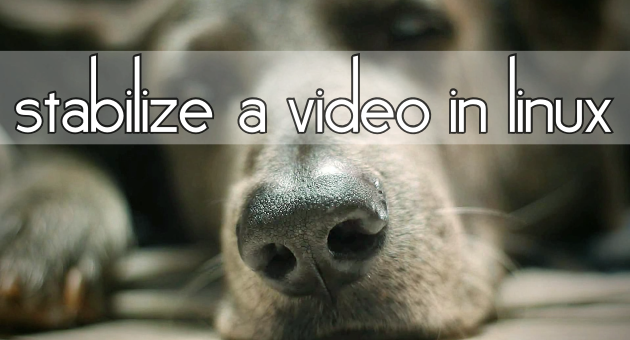Stabilize videos in Linux with Transcode and Vid-Stab –
Written By :
Category :
arte
,fedora
,Fotografía
,General
,guias
,Linux
,películas
,ubuntu
Posted On :
18 August, 2014
Share This :

Having a camera that record videos was something I always wanted, however, I don’t have a stabilizer, so even if I have an awesome quality, my pulse movement isn’t helpful. That’s why I decided to take a look and see what options do I have in Linux and found Vid-Stab, which allows me to stabilize the image. vid-stab is a plugin for transcode, so first thing your need to do is to install it:su –
yum -y install transcodeNow, you only need to download the plugin, uncompress it and install it: (Check the latest version at: http://public.hronopik.de/vid.stab/download.php?lang=en )wget -c http://public.hronopik.de/vid.stab/files/vid.stab-0.98b-transcode-1.1-binary-x86_64.tgz
tar -zxvf vid.stab-0.98b-transcode-1.1-binary-x86_64.tgz
cd vid.stab-0.98b-transcode-1.1-binary-x86_64
$ ./install.shAnd that’s it, now it’s time to stabilize our video. First step is to generate a trf file where the info about the video frame will be stored and then will be used as source to edit the video itself.transcode -J stabilize -i ORIGINAL.mp4Once you get the trf file, it’s time to transform the video:[cq_vc_videocover videoimage=”5128″ imageshape=”square” overlaytype=”icon” iconshape=”circle” iconcolor=”#1eb7bc” iconbgcolor=”#ffffff” videolink=”https://www.youtube.com/watch?v=Y-DTBXulhlc”]transcode -J transform -i ORIGINAL.mp4 -y xvid -o STABILIZED.mp4And that’s it! You can always add more options to improve the output, change the codec or even apply a better movement reduction.
I took the liberty to make a video test and record Gris, our dog. I lost a bit of quality, however, stabilization work just awesome.
Youtube Link: https://www.youtube.com/watch?v=Y-DTBXulhlc

